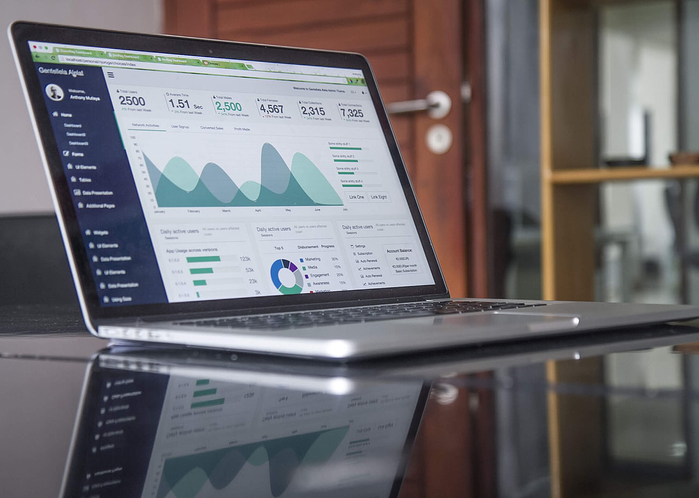It is often said that data is the new gold rush for businesses and in many ways this is true – especially when you consider the thousands (if not millions) of prospectors around the globe all scrambling on top of one another to get their hands on it.
The theory is that the more data a company has, the better it can understand its customers and thereby create more attractive products and services to squeeze out the competition.
The dental industry is joining this data rush, gathering reams and reams of data from all manner of software and connected devices, pushing dental data analytics towards the forefront of patient care and practice performance.
Dental Data Analytics – Extracting Value from Raw Material
Simply gathering data, however, does not automatically guarantee results. The purpose of dental data analytics is to enhance revenues, profits and patient experiences. This might be achieved through identifying new treatments, improving patient care, for training purposes, or to improve business operations, such as reducing waiting times at your practice.
However, it must be remembered that data is not in and of itself valuable in its raw state – much like gold, in fact. Once gold has been mined, before any value can be obtained from it, it needs to be processed – minted into coins or fashioned into shiny gold teeth, for example. Only at this point does the prospector have a desirable product that can be sold for a profit.
It’s the same with data – in its raw state, data is essentially valueless. So, in order to extract any business value from your data, you first need to process it – manipulate and analyze it to extract those golden nuggets of insight that will help you make an impact on the health of your patients or the performance of your practice.
Examples of Data Analytics in Dentistry
You will of course already be sitting on plenty – mountains, most likely – of patient data. Aside from providing patient care and performing highly skilled procedures, dentists also have to take on additional financial, managerial and operational responsibilities to run their practice.
As such, a significant amount of patient data is collected from each patient visit. This is your gold mine – so long as you have the means to process and utilize the data contained within to generate the insights you need to drive decision-making at your practice.
Data analytics in dentistry at the practice level is primarily used to organize, analyze and interpret the digital information that is generated and stored on the practice’s system. In the past, these systems were largely paper-based – handwritten appointment books, paper charts, ledgers, etc. Today, however, as dentists have embraced digital tools, some form of practice management software is the norm to record and store this data.
These tools can generate various reports, such as collections per day or production per day. However, though these reports do indeed provide various insights into business performance, there’s still a significant amount of manual processing, number crunching and interpretation that needs to be conducted in order to extract value.
But there’s another problem. Things like production and collections – metrics that dentists tend to monitor regularly – are historical metrics. To use some data analytics terminology, these metrics are known as lagging indicators – they tell you what happened, not how to make improvements.
By contrast, leading indicators measure what you do to achieve a specific outcome and can thus be used to predict how making certain changes will drive future performance. In a dental practice, a leading indicator might be how many patients take up a newly introduced treatment plan, for instance.
This data can then be analyzed to identify trends and predict the future – an upwards trend in acceptance rates, for example, may forecast an increase in revenue, or alert you to a shortage of appointment slots available in order to deliver the treatment.

(Image source: clevertap.com)
Basic practice management software won’t allow you to make much use of leading indicators – they might generate reports, but you may still have to transfer the data into a spreadsheet to manually scan for trends and draw insights.
Instead, many dental practices are making use of specialized dental data analytics software that provide data visualization functionality via intuitive dashboards that display and organize practice data in easy-to-understand charts and diagrams.
In this way, many leading indicators – which fall under the umbrella term of key performance indicators (KPIs) – can be tracked and analyzed to drive decision-making at your dental practice. These include things like patient KPIs, that tell you the number of active patients, the number of new patients and patient retention figures.
Hygiene KPIs can track production per hour of your hygienists, as well as production per day and reappointment rates.
Financial KPIs can also be tracked to analyze practice overhead per hour, day, chair or employee and give you a better picture of the financial health of your business.
Tracking patient demographic KPIs can also help you get a handle on the figures pertaining to the age of your patient base, which insurances they use, the number of patients per employer, etc. – all of which can be used to drive decision-making with regards to things like insurance participation, marketing and even office location.
Other advances in dental data analytics utilize technologies that can improve treatments and care plans. For example, artificial intelligence (AI) and computer vision tools can analyze thousands of X-rays and other unstructured data (such as hygienist notes about symptoms) containing millions of data points. You can then use these trained smart tools at your practice to help you analyze radiographs, leading to improved diagnoses, better early intervention and enhanced treatment recommendations.

(Image source: medium.com)
Other innovations include things like app-supported electric toothbrushes which record data about patients’ home care habits. There are also many interesting applications of virtual and augmented reality (VR and AR) technology in dentistry emerging that, aside from improving patient experiences and treatments, generate data that can be mined for business-improving insights.
The Importance of Backing Up Your Data
Be it advanced patient management software, automated X-ray diagnostics, smart toothbrushes or the latest and greatest in VR, embracing new technologies to improve patient care and business performance through dental data analytics requires you to have your patient data under control.
Dental practices are of course HIPAA-compliant businesses – and any data collected for processing needs to be securely protected according to HIPAA requirements. While embracing dental data analytics can help you gain a competitive edge, increase your client base and improve your profits, it remains first and foremost an essential requirement that you look after your patients’ PHI data to regulatory standards.
This will mean investing in a robust and reliable, HIPAA-compliant and cloud-based data backup and recovery solution like WisperMSG. Ultimately, the golden insights you’re after to improve your practice are based on patient data.
So, before you start developing strategies for what you are going to do with their data to enhance business performance, it’s vitally important that it is stored, backed up and wholly recoverable in the event of a data disaster.
With a secure backup and recovery solution in place, you can then push your plans forward and start utilizing the huge power of dental data analytics to improve your practice, develop new treatments and services and create new customer segments.
Try WisperMSG free for 7 days here.




